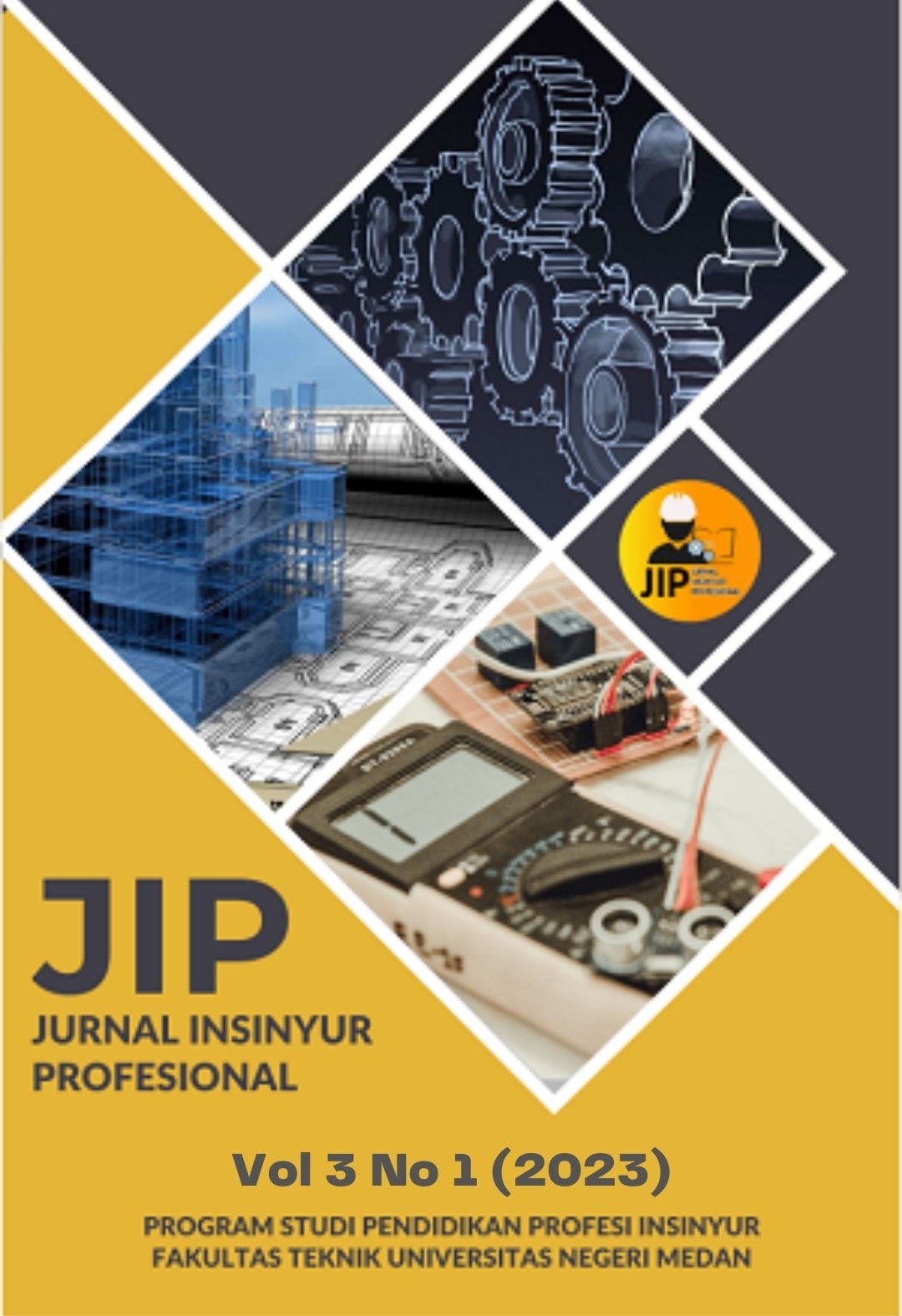PENGEMBANGAN MULTIMEDIA PEMBELAJARAN BERBASIS AUGMENTED REALITY
DOI:
https://doi.org/10.24114/jip.v3i1.42488Abstract
Many subjects in engineering are abstract, not only in theoritical concepts but also in practices. This causes difficulties for students in understanding the material. Especially if the availability of practical tools is limited. Therefore we need media that can help students learn abstract material to be more real amidst the limitations of existing practical tools. Multimedia is a technology that is used in various fields, also in the education field. Multimedia has advantages such as being able to simulate, sound, move, video, and others and can be used as a learning aid. Multimedia based on Augmented Reality (AR) is an alternative solution to solve the students problems in learning. The aims of this research is to develop multimedia based on Augmented Reality. This research method is ADDIE. The multimedia development process begins with analysis, design, development, limited implementation and evaluation. The result of this AR-based multimedia development process is that multimedia products have been declared feasible, both in terms of material and multimedia.References
Aija, C. and Inga. S (2012). Use of ICT teaching-learning methods make school math blossom International Conference on Education and Educational Psychology (ICEEPSY 2012) University.
Angrawal, M., Kulkarni, A., Joshi, S., Tiku, N (2015). Augmented Reality. International Journal of advance Research in Computer Science and Management Studies: India
Ariasdi, (2008). Panduan Pengembangan Multimedia Pembelajaran. Dalam http://elektro. line.com/. (10 Nevember 2009: 14.00 WIB).
Azuma, R. (2015). 11 Location-Based mixed and augmented reality storytelling.
Billinghurst, Mark, et. al. (2008), Tangible Augmented Reality. International Conference on Computer Graphics and Interactive Techniques. ACM SIGGRAPH ASIA, Singapore.
Dabutar, J. (2007). Infrastruktur pendidikan jarak jauh. Artiel pada situs œpendidikan network. Www.re-searchengines.com.artiel.htm.
Fidiatno, I. (2007). Pembelajaran Berbasis Multimedia : Penerapan Perangkat Tik Dalam Pengembangan Kegiatan Belajar Mengajar. http://media.diknas.go.id/media/document/5335.pdf, diakses 10 Februari 2010
Rakim (2008),Multimedia dan Pembelajaran, (Online) tersedia: hittp://rakimypk.blogspot.com/2008/04/(23 Desember 2008).
Rujianato E, Dhanar I. 2014. Pengembangan Media Pembelajaran Mengenal Organ Pencernaan Manusia Menggunakan Teknologi Augmented Reality. Jurnal Buana Informatika, Volume 6, Nomor 2, April 2015: 153-162
Suheri, A. (2006). Animasi Multimedia Pembelajaran. Jurnal Informatika Volume 2 No.1 Periode Juli- Desember 2006. Institut Teknologi Bandung. Dalam http://www.google.com/. (5 Desember 2009: 15.00 WIB).
Wang X, Zhang Q, Chen Y and Liang S (2018) Multimedia teaching platform for urban planning utilizing 3D technology Int. J. Emerg. Technol. Learn. 13 4 187“199
Wang Y, Qi A and Cui F (2016).Application of the multimedia teaching system based on real-time shooting and production in martial art course Int. J. Emerg. Technol. Learn. 11 3 37“41
Wiana. W, Syaom Barliana, M. and Riyanto, A.(2018). The effectiveness of using interactive multimedia based on motion graphic in concept mastering enhancement and fashion designing skill in digital format Int. J. Emerg. Technol. Learn. 13 2 4“20
Yue, N. (2017). Computer multimedia assisted English vocabulary teaching courseware Int. J. Emerg. Technol. Learn. 12 12 67“78







